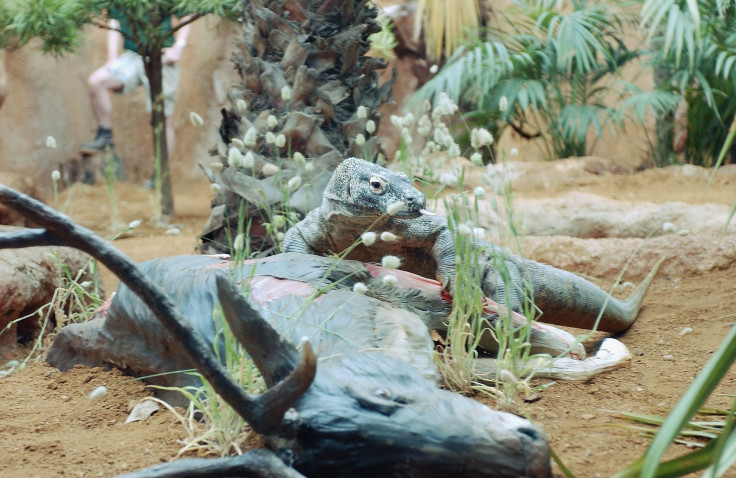What Are Komodo Dragons? Google Doodle Honors Indonesian National Park With Facts About The Large Lizards

Where is Komodo National Park? Are Komodo dragons endangered? How heavy are Komodo dragons? How fast can Komodo dragons run?
Monday's Google Doodle aimed to answer all of these questions and more. The giant tech company centered its beginning-of-the-week homepage graphic around Komodo dragons, the large lizards that roam in Indonesia, and the Komodo National Park, which was celebrating its 37th anniversary.
Gotta love today's @Google Doodle about Komodo dragons. ❤️️ pic.twitter.com/GzVbKVvguH
— Lodair (로다이르) (@LodairJunior) March 6, 2017
Komodo National Park was created in 1980 with the goal of protecting Komodo dragons and their environment, according to its website. It's comprised mostly of land on the islands of Komodo, Rinca and Padar and their surrounding waters, in total covering about 700 square miles. The park isn't only home to Komodo dragons — it also serves as a habitat for sea turtles, manta rays, whales, Timor deer and orange-footed scrub fowl.
That said, however, the Komodo dragons are the park's most famous residents.
Komodo dragons can grow to be as long as 10 feet and weigh about 370 pounds, though they usually don't exceed 160 pounds, according to the Smithsonian's National Zoo and Conservation Biology Institute. They have forked tongues and a sharp sense of smell that can help them sense prey from more than two miles away. They eat everything from geckos to rodents to deer and run up to 13 mph. Komodo dragons have a life span of about 30 years.
komodo dragons are so cute pic.twitter.com/xMY2QLaf9G
— adrienne (@adriennexgrace) March 6, 2017
But they're also threatened. The dragons are considered a vulnerable species, meaning their population falls between 3,000 to 5,000, according to National Geographic.
The park, a UNESCO World Heritage site, has also faced a number of challenges in recent years, facing spikes in human population on the island, overfishing, poaching and pollution, according to its website. Still, people on the island "truly appreciate the dragon," as a tour guide told Guardian writer Jeremy Hance recently. It provides locals with jobs — but that comes with a cost.
"He also warned that if tourism gets out of control, the demand for new infrastructure could cut into the dragon’s already limited habitat," Hance wrote. "At present, less than 10 percent of the national park is actually open to the public, so many of the dragons are able to live out their lives without ever running into a selfie-snapper."
Take Monday's Google Doodle quiz here.
© Copyright IBTimes 2024. All rights reserved.






















